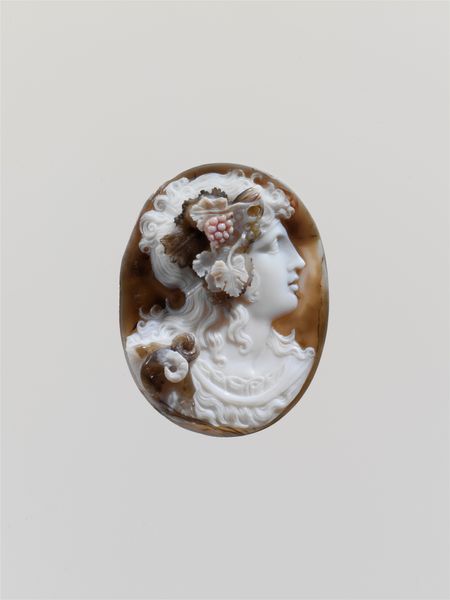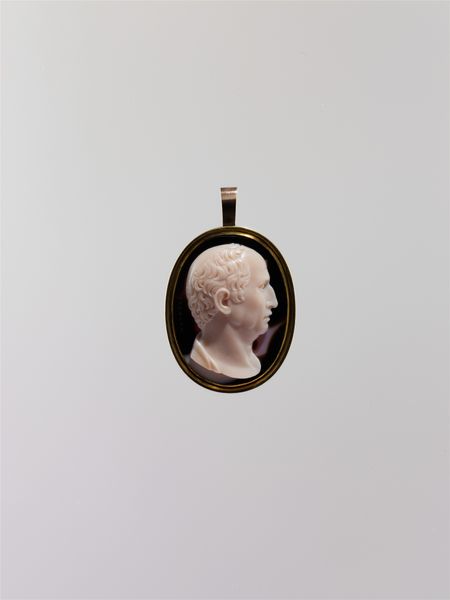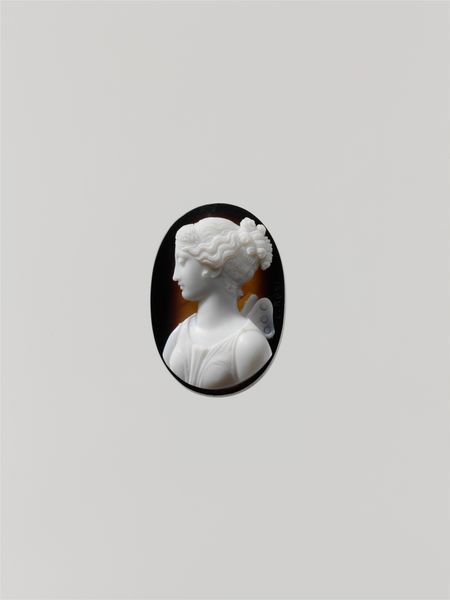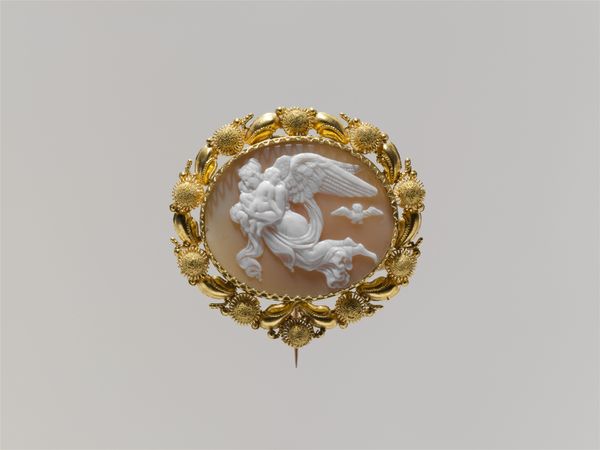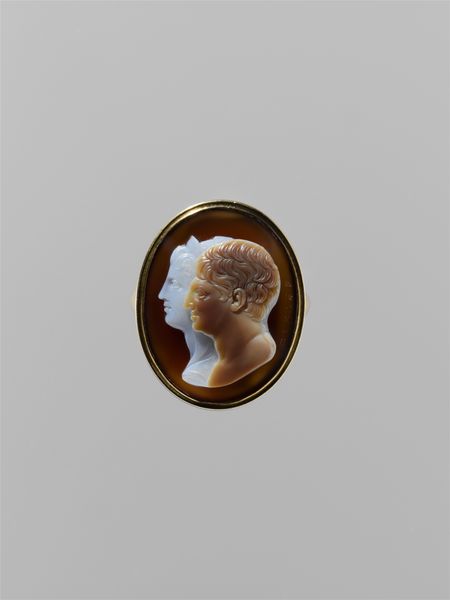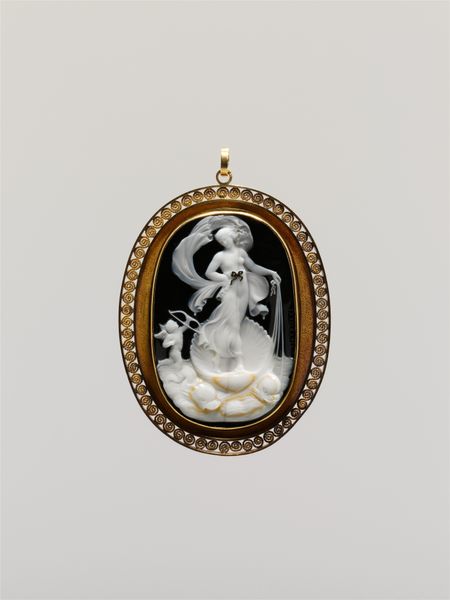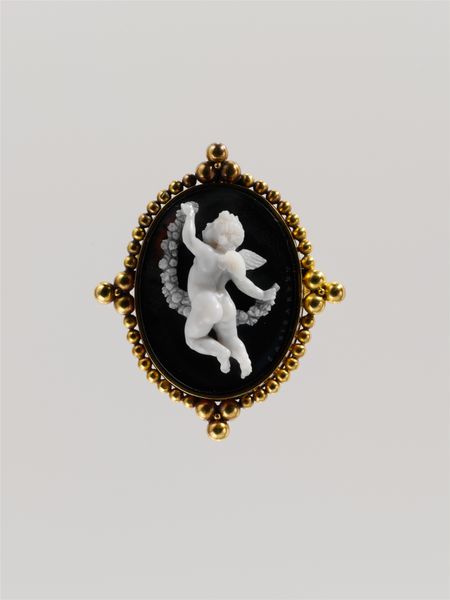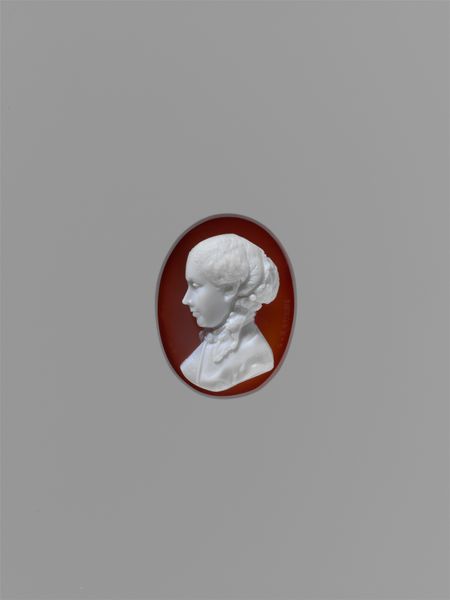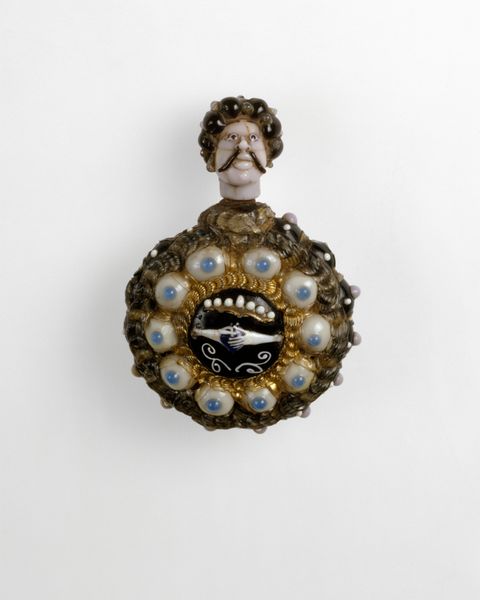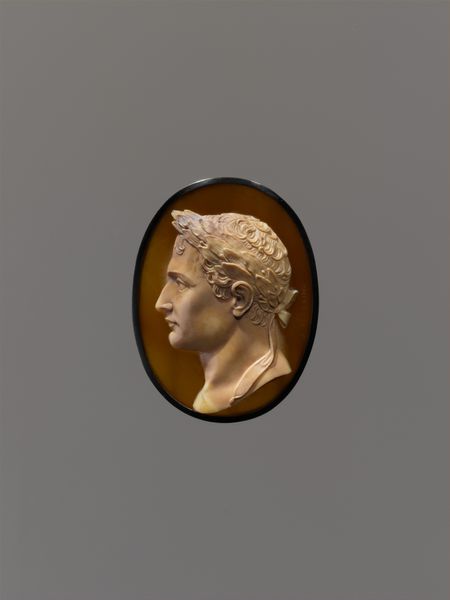
relief, ceramic, sculpture
#
portrait
#
neoclacissism
#
sculpture
#
relief
#
ceramic
#
ancient-mediterranean
#
sculpture
#
ceramic
#
decorative-art
Dimensions: Overall (confirmed): 1 3/4 x 1 5/16 in. (4.4 x 3.4 cm); visible cameo: 41.7 x 32.5 mm
Copyright: Public Domain
Curator: Ah, the "Bust of a Bacchante," dating roughly from 1820 to 1838. It's currently held here at the Metropolitan Museum of Art. Such a delightful Neoclassical sculpture. Editor: She looks positively serene. It's small, right? And exquisitely detailed. There is a playful wildness tempered by, like, profound inner peace, wouldn’t you say? The details, so soft. Curator: Yes, it’s relatively small, intended to be worn as a piece of jewelry. What intrigues me is how a piece rooted in antiquity gets reinterpreted during the Neoclassical era. The Bacchante, normally associated with revelry and Dionysus, is given this reserved air. Editor: I suppose it’s what people want to take from their own art at the moment, their own historical references. This feels almost subversive – taking a symbol of liberation, even hedonism, and refining her for, perhaps, more "polite" society. It seems someone wanted to adorn themselves with just a *hint* of wildness! Curator: Exactly! It highlights the tension inherent in the Neoclassical movement itself. The fascination with order, the political associations of imagery. Look at the idealized form of her face but how do you also reconcile that with the Bacchante, who is meant to be uninhibited? It also poses questions about who gets to use classical imagery. Editor: Do you know the sculptor's intention or origin? Seems that with the piece being small, with decorative touches, would dictate for what class and gender the piece would appeal to at the time of its creation. I wonder what it said to have such decoration so proudly displayed back in the day? Curator: While it is often difficult to gauge intentions, it's quite possible that whoever wore it aimed for what could be seen as social commentary. As such, it shows not just an appreciation for craft and aesthetic, but speaks on how art can show an understanding for societal awareness of social cues as well. Editor: A tiny revolution worn close to the heart. The subtlety almost makes it bolder, don’t you think? There is an intimacy to these works. Thank you! Curator: Precisely! A potent image presented within a very contained object. An evocative glimpse into both past artistic styles and contemporary fashion!
Comments
No comments
Be the first to comment and join the conversation on the ultimate creative platform.
